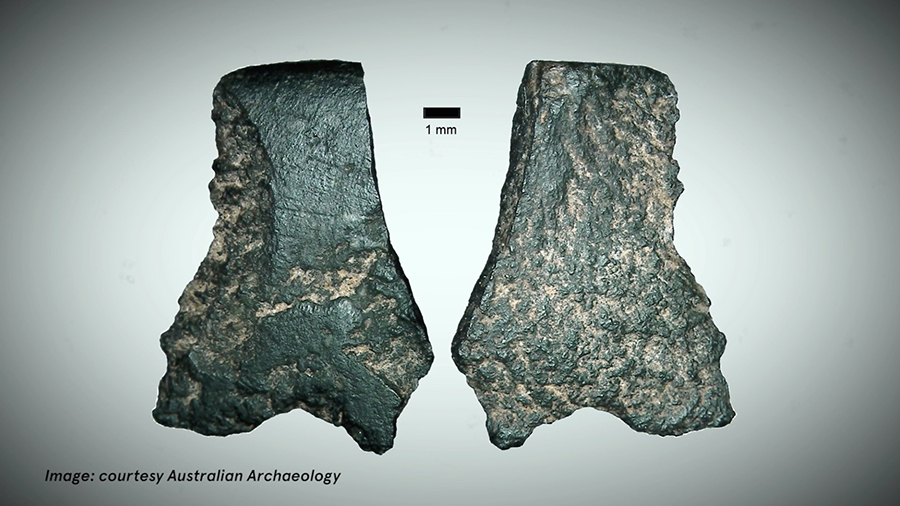Australia – Archaeologists have found a very antique ax fragment. It dates back to the Stone Age, around 45,000 to 49,000 years ago. Researchers at The University of Sydney (USYD) published Wednesday an analysis of the piece. Early Australians have been described as technology innovators.
This is the oldest ax ever found by archaeologists. Similar tools that were previously found, date to 10 millennia later. Professor Peter Hiscock from USYD led a study of the ax. Detailed results can be found in the journal Australian Archaeology.

The weird tool was excavated in the 1990s by Professor Sue O’Connor from the Australian National University (ANU). It was found among other tools and artwork in the Carpenter’s Gap, a large rock shelter where early modern humans established.
Professor Hiscock said no other ax of this date, can be found in other regions of the world. Similar tools appeared in Japan about 35,000 years ago. However, antique axes in most countries date to 10,000 years ago, when agriculture started.
“Since there are no known axes in Southeast Asia during the Ice Age, this discovery shows us that when humans arrived in Australia they began to experiment with new technologies, inventing ways to exploit the resources they encountered in the new Australian landscape,” Hiscock said.
In 2014, a further investigation of the excavated objects was ordered. A fragment of the polished ax was hidden among the oldest levels of the site, said USYD in a press release issued Wednesday. It comes from an ax-shaped from basalt and polished with another rock.
The fragment belonged to the polished edge of the ax, that was re-sharpened by early Australians. Researchers suggest that it was built to be carried away, and people from the Stone Age left the fragment behind.
Australian #archaeologists – including our Professor Peter Hiscock – have found a piece of the world's #oldest #axe: https://t.co/kgZDzB9F6E
— Faculty of Arts and Social Sciences (@ArtSS_Sydney) May 10, 2016
But when were axes invented? An old-time dilemma may have received an answer
Polished stone axes were fundamental tools in hunter-gatherer societies, said Professor Hiscock. In fact, they were once the epitome to describe the Neolithic phase of human life. Finding the origin of axes has always been a challenge for archaeologists.
The new discovery of the Australian fragment may provide an answer to the question since it dates to 45,000 to 49,000 years ago. People arrived in Australia around 50,000 years ago. “There are no axes in the islands to our north,” said Hiscock.
That said, people may have established in Australia and created axes. Scientists suggest the “ground-edge” technology was developed as humans began to adapt to new regional landscapes.
Great reflexive piece from Peter Hiscock on the process of publishing this new research on ground-edge axes https://t.co/hsUytL4lzu
— AustArchAssoc (@AustArchaeology) May 11, 2016
Source: The University of Sydney Press Release
